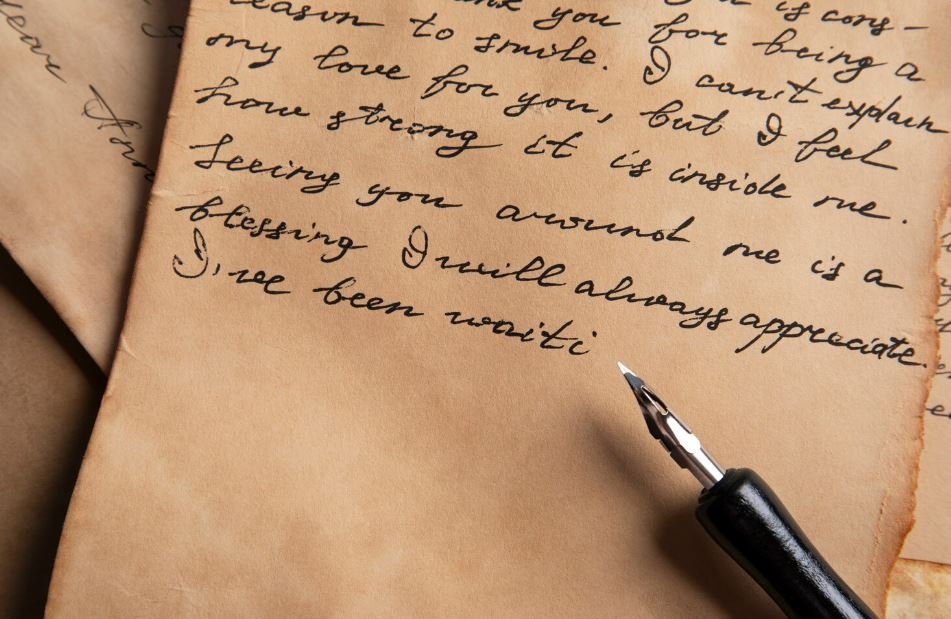
Long thought to be fading into quaint irrelevance, the art of letter writing is quietly making a remarkable comeback in terms of how we can meaningfully communicate. Artists, writers, and people with strong emotional attachments have rediscovered the handwritten letter in recent years as a tool for connection that is incredibly versatile and serves as a counterbalance to the speed and saturation of digital life.
By starting Penpalooza, Rachel Syme was able to capitalize on a surprisingly resilient demand for more in-depth, slower conversation around the world. Tens of thousands of people from various nations and cultures are now writing for her project. Through thoughtfully chosen stationery and purposefully written lines, people are devoting time to creating what she refers to as “a body of work” with another person. Because letters endure, that phrase feels both poetic and incredibly useful.
| Topic | Details |
|---|---|
| Core Subject | The Art of Writing Letter |
| Communication Style | Handwritten, personal, emotionally expressive |
| Historical Significance | Practiced by Franklin, Rilke, Seneca, Van Gogh |
| Modern Revival | Fueled by digital burnout and desire for meaningful connection |
| Popular Advocates | Rachel Syme, Jon McGregor, Colum McCann, Florence Welch, Tom Hanks |
| Key Trends | Penpalooza, Letters Live, Letter Writing Subscriptions |
| Societal Impact | Boosts mental health, builds deeper relationships, preserves emotion |
| Letter Traits | Tactile, patient, enduring, artistic |
| Modern Barriers | Fast-paced tech habits, email culture, fear of slowness |
| Emotional Value | Time capsule of human emotion, uniquely irreplaceable |
In the last ten years, handwritten letters have gained popularity again. Hundreds of letters from strangers were sent to McGregor’s creative writing project at the University of Nottingham. Some of the letters were perfumed, torn, scrawled, or included sketches and side notes. These were moments preserved in ink, not merely messages. It was like revealing lives one envelope at a time while reading them.
The Art of Letter-Writing, a manual full of formality, purpose, and stylistic advice, was once owned by Benjamin Franklin. Then, letters weren’t just written; they were designed for etiquette, status, and impact. Today’s handwritten letters, on the other hand, are noticeably informal but emotionally straightforward. Their intent is more valuable than their flawlessness.
Writing letters is a radical act of presence in today’s hyper-digital world. It does not require or expect a response right away, in contrast to email. The goal of a letter is resonance, not urgency. It lingers, waits, and occasionally shows up long after people’s perspectives or situations have changed. Therein, however, is its magic: a letter, once posted, carries with it the feelings of the time it was written, holding them in place between pages like pressed petals.
Journals are kept by Florence Welch. Tom Hanks uses old-fashioned typewriters to write fan mail. Publicity stunts are not what these are. They represent a broader shift in culture, where the importance of intentionality is being reclaimed. The public’s trust in transient digital messages appears to be eroding annually. A letter provides something much more enduring because it is a physical repository of emotion.
Syme started writing letters as a diversion from screen fatigue during the pandemic. She asked if anyone was interested in exchanging handwritten notes in an online post. Hundreds of people responded. She created a network out of the surprisingly large response. That small action—a digital call to go analog—demonstrates how much better emotional engagement can be when written by hand instead of quickly typed.
According to Colum McCann, his father’s letters are kept in a crate and patiently await the day when he will read them. He hasn’t yet. However, he thinks those letters contain presence, which no digital message could ever have. McCann wrote, “He will never be gone in that crate.” Such sentiments are both essentially true and eerily beautiful. A physical letter is felt, held, and occasionally cried upon in addition to being read.
According to Virginia Woolf, women have traditionally discovered their literary voice through letters while sitting by sickbeds or firesides, invisible to men. Despite being private, their words were remarkably well-spoken. Writing letters was a lifeline, not a diversion. Today, there is a comparable parallel. Letter writing provides an opportunity for young creatives and emotionally sensitive people to experiment, not with formality but with authenticity.
Particularly among younger generations who yearn for analog beauty, letters will probably become more common in the upcoming years as people look for solace from scrolling fatigue and notification overload. Vulnerability, introspection, rhythm, and care are qualities that one letter can capture that a hundred texts cannot. Writing itself, including stopping, thinking, and word choice, imposes a form of mindfulness that is especially good for mental health.
Recipes and memories may be contained in some letters. Some make confessions, while others show appreciation or sorrow. Letters are incredibly trustworthy emotional records because of their diverse contents. In essence, they turn into time capsules that capture an era as well as the sender’s life. The letters Van Gogh wrote to Theo help us understand his soul, even though we now study his artwork in museums.
People who have recently brought this practice back have compelling anecdotes. At a friend’s funeral, a woman read aloud a letter that had been written decades prior, bringing her friend’s voice to life. It echoed laughter, anxiety, joy, and introspection in addition to love. Writing letters is an art form that captures ephemeral moments in ink.
Many nonprofits are also rediscovering the value of letter writing by incorporating it into elder care, prison outreach, and mentorship programs. Cross-border connections are made simple by initiatives like Postcrossing and Love For Our Elders. These small but powerful deeds create emotional bonds. People’s lives have been significantly improved by these connections, which were started by paper and pen, especially for those who feel alone.
What ought one to write, then? One of the memories. A gratitude. A query. A narrative. Neither an algorithm nor a rule exist. Honesty is what letters need, not polish. Letters are “leaky,” as Maria Popova famously remarked—just as a baby cries, a kettle whistles, or a dog barks. They are infused with life. They are important for that exact reason. They capture actual moments without being skewed by metrics or performance.
Writing letters is still remarkably similar to thought-transfer if a single phrase, such as “first kiss,” can evoke strong emotions in you. Even with its rapid advancements, modern technology still finds it difficult to replicate this remarkably transparent form of human connection.

